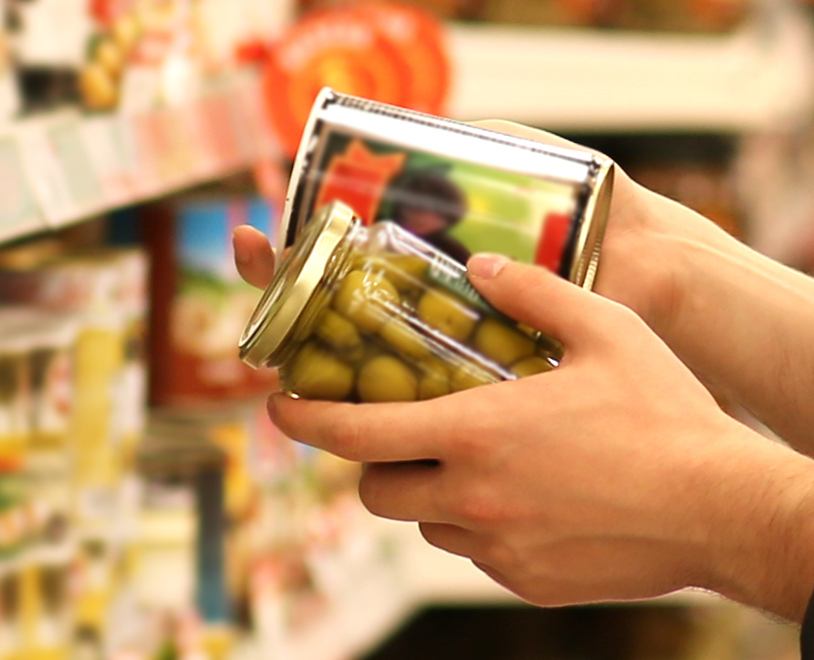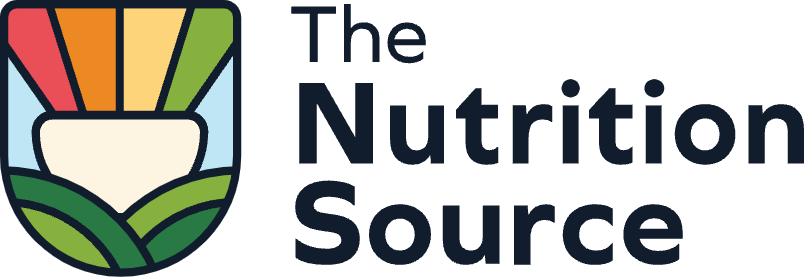
Who isn’t perplexed by certain ingredients listed on a food label? Unfamiliar terms like cellulose gum, maltodextrin, soy lecithin, or carrageenan might make you wonder if they are healthy or not. These are all types of food additives, defined as substances not typically found in food but added to enhance the texture, flavor, or color. They also prolong shelf-life by delaying bacterial growth and spoilage.
Health and Safety
Additives in ultra-processed foods have increasingly been questioned as possible contributors to health problems. However, research in this food category in relation to human health is still scarce. There are no gold standard biomarkers or measures of disease available in relation to food additives. It is also difficult to single out the effects of one additive, as ultra-processed foods typically contain several additives as well as added sugar, salt, or unhealthy fats.
What does Generally Recognized as Safe (GRAS) mean?
Under the Federal Food, Drug, and Cosmetic Act from the U.S. Food and Drug Administration (FDA), any ingredient that is intentionally added to food is classified as a “food additive,” which is subject to close review and approval by the FDA. However, certain ingredients are exempt from FDA review including those categorized as GRAS, which is an acronym for Generally Recognized As Safe. These ingredients have evidence of their safety, and are generally recognized by qualified experts as having been shown to be safe for use in foods. Examples of GRAS ingredients are vinegars, table salt, sugar, spices, preservatives like sodium benzoate and citric acid, thickeners like xanthan gum, and flavor enhancers like monosodium glutamate.
Though GRAS ingredients must meet the same safety standards as food additives and the same quantity and quality of information that would support the safety of a food additive, there is a significant difference: they are not evaluated prior to use in commercial products nor are they monitored for safety by the FDA. Food manufacturers determine an ingredient’s GRAS classification and safety, but do not have to report its use to the FDA.
This has drawn fire from some consumer groups who believe that food industries may abuse this allowance and use ingredients with potentially harmful health effects that are submitted under the GRAS classification. One example of GRAS substances later found to be unsafe were artificial trans fats that were classified as GRAS until 2015 and widely used in processed packaged foods. After substantial scientific evidence showed significant harm from trans fats, they were later banned from the U.S. food supply.
Consumer groups have advocated for changes to the GRAS system, such as not basing GRAS classification on unpublished studies or made by experts who have ties to a food industry creating a conflict of interest, and to make all GRAS notifications mandatory and public, rather than voluntary.
Below we explore some common food additives (many of which are Generally Recognized as Safe [GRAS]), defining what they are, why they’re added, and any known health impacts.
A Closer Look at Common Additives
Carrageenan
What is it?
Carrageenan is a polysaccharide (a long string of carbohydrates) that comes from red seaweed. There are two types of carrageenan: undegraded (food-grade) and degraded (poligeenan). Undegraded carrageenan is processed with alkaline substances and is approved for use in foods. Degraded carrageenan is processed with acid and not approved as a food additive.
What does it do?
Food-grade carrageenan is a thickener, stabilizer, gelling agent, and emulsifier.
What foods might contain it?
Ice cream, pudding, soy milk, chocolate milk, yogurt, infant formula, jams/jellies, salad dressings, beer, deli and canned meats.
Health notes
- Concerns about carrageenan are largely based on the degraded form (not used in foods).
- Laboratory and animal studies show that degraded carrageenan can induce chronic intestinal inflammation, reduce the thickness of the protective mucosal lining of the intestine, and reduce the diversity of the gut microbiome. Other animal studies show it can induce intestinal ulcers and tumors.
- For this reason, the International Agency for Research on Cancer (IARC) classified degraded carrageenan as “possibly carcinogenic to humans” (Group 2B) but reported that it did not find any human data on either form of carrageenan to cause cancer in humans.
- Controversy was created even with food-grade carrageenan when people questioned if it could be converted to the harmful degraded form in the human gut due to exposure to stomach acid. Yet research has not been able to support this theory.
- Human clinical trials on carrageenan and its effects on gut health and diseases such as inflammatory bowel disease (IBD) are few and use very small sample sizes of short duration, so results are inconclusive. It is unclear if carrageenan itself or a dietary pattern that is high in ultra-processed foods of low nutritional value containing carrageenan among other food additives play a role in IBD flares.
Cellulose gum
What is it?
Cellulose is found naturally in all plants, giving them structure and acting as a dietary fiber. Cellulose as a food additive is called carboxymethyl cellulose, or cellulose gum, which is derived from wood pulp treated with acetic acid (i.e., vinegar).
What does it do?
Used as an emulsifier and thickener.
What foods might contain it?
Occurs naturally in all plant foods including fruits and vegetables, whole grains, legumes, and nuts and seeds. As a food additive, it is used in salad dressings, sauces, ice cream, grated cheeses, yogurt, cream cheese, and gluten-free baked goods.
Health notes
- Can act as a laxative as it is not digested in the body, and adds bulk to stools.
- It may help regulate blood glucose and increase feelings of fullness.
- Eating too much cellulose, such as from supplements or eating too many plant foods at one time can lead to stomach upset, bloating, gas, and diarrhea.
- Cellulose gum has been found in animal studies to increase intestinal inflammation and change the gut microbiome, with speculation that it could negatively affect people with inflammatory bowel disease. However, human studies are lacking and it would be difficult to tease out the sole effect of cellulose gum as an additive in processed foods that typically contain several other additives.
Guar Gum
What is it?
Guar gum is a polysaccharide made from a legume called guar beans. It acts as a soluble fiber that absorbs water and forms a gel.
What does it do?
Used as a thickener, binder, and emulsifier to create a thickened texture that does not separate.
What foods might contain it?
Salad dressings, yogurt, sauces, plant milks, ice cream, canned soups.
Health notes
- Guar gum acts as a soluble fiber that can slow digestion in the gut, which may help to moderate blood sugar spikes.
- A meta-analysis of randomized controlled trials found that guar gum as a supplement reduced total cholesterol and “bad” LDL cholesterol in participants, but not triglycerides or “good” HDL cholesterol.
- Small trials in humans show it may help reduce constipation in those with irritable bowel syndrome. It also acts as a prebiotic that feeds gut microbes in the intestines, leading to the production of beneficial short-chain fatty acids.
- However, some animal studies found that guar gum increased the risk of colitis, which is an inflammation of the large intestine. Human trials are needed to further explore whether it may play a role in inflammatory bowel disease and other digestive disorders.
- People who are sensitive to dietary fibers in general may experience digestive discomfort when eating guar gum in high amounts, potentially causing gas, bloating, abdominal cramping, or diarrhea.
- Guar gum was banned by the FDA for use in over-the-counter weight loss supplements after multiple case reports of one brand containing very high concentrated amounts of guar gum caused blockages in the esophagus when taken without adequate fluids.
Xanthan gum
What is it?
Xanthan gum is a polysaccharide made by the bacterial fermentation of sugars from wheat, corn, dairy, or soy.
What does it do?
Used as a thickener, emulsifier, binder, and stabilizer to create a smooth, thickened texture. It binds to water and acts similarly as gluten in creating a moist elastic texture in baked products, so is often used in gluten-free packaged foods.
What foods might contain it?
Salad dressing, sauces, gluten-free flours, canned soups, ice cream, plant milks.
Health notes
- As seen with other polysaccharide additives, xanthan gum may have a modest effect in lowering blood sugar or blood cholesterol, but research in humans is scarce.
- Some laboratory studies have experimented with adding xanthan gum to refined flour foods like biscuits or white bread to lower the glycemic load, but these are novel approaches that need more study.
- Xanthan gum can have a laxative effect if eaten in large amounts and may cause stomach discomfort in individuals sensitive to dietary fibers in general.
- Xanthan gum has been found to be broken down by specific gut microbes, which produces short-chain fatty acids. However, the implication of xanthan gum on the gut microbiome needs more research.
Maltodextrin
What is it?
Maltodextrin is a white powder produced from wheat, corn, rice, or potato starch.
What does it do?
Used to improve the flavor and texture of food and increase shelf-life.
What foods might contain it?
Sauces, cereals, chips, baked foods, yogurt, soda, sports drinks.
Health notes
- Maltodextrin is a highly processed powder derived from starches, which is broken down into glucose and quickly absorbed in the gut. This can cause blood sugar to rise quickly, so those with prediabetes and diabetes should be aware of this ingredient in processed foods.
- Animal studies show that it can negatively affect the gut microbiome and may increase intestinal inflammation such as colitis.
- Those with wheat allergy or gluten intolerance should be aware that if the form of maltodextrin is derived from wheat, it may contain trace amounts of wheat or gluten, the protein in wheat. If so, the food package label should list wheat as an ingredient.
Soy lecithin
What is it?
Soy lecithin is an additive extracted from soybean oil.
What does it do?
Used as an emulsifier and improves the mouthfeel and texture of foods.
What foods might contain it?
Salad dressings, sauces, ice cream, yogurt, margarine, baked goods, chocolate.
Health notes
- People who are avoiding soy due to allergies or other health reasons may wonder if soy lecithin contains soy. The allergenic protein component in soy foods is usually removed during processing, so soy lecithin should be safe with a soy allergy unless the allergy is very severe.
- Although there is vast research on the health effects of soy protein and soy isoflavones, there is little with soy lecithin.
- A few laboratory studies and small clinical trials suggest that soy lecithin may have a beneficial effect on cholesterol levels, but more evidence is needed.
About This Page
Written by: Nancy Oliveira, MS, RD, LDN, CDCES
Reviewed by: Teresa Fung, MS, RD, ScD
Updated: July 25, 2025
View page history
- July 25, 2025
- Page published
- Content and evidence reviewed
Sources
View source list
- Borsani B, De Santis R, Perico V, Penagini F, Pendezza E, Dilillo D, Bosetti A, Zuccotti GV, D’Auria E. The role of carrageenan in inflammatory bowel diseases and allergic reactions: where do we stand?. Nutrients. 2021 Sep 27;13(10):3402.
- Du M, Hu FB. Food additive emulsifiers: a new risk factor for type 2 diabetes?. The Lancet Diabetes & Endocrinology. 2024 May 1;12(5):291-2.
- Evans M, Njike VY, Hoxley M, Pearson M, Katz DL. Effect of soy isoflavone protein and soy lecithin on endothelial function in healthy postmenopausal women. Menopause. 2007 Jan 1;14(1):141-9.
- Hofman DL, Van Buul VJ, Brouns FJ. Nutrition, health, and regulatory aspects of digestible maltodextrins. Critical reviews in food science and nutrition. 2016 Sep 9;56(12):2091-100.
- International Agency for Research on Cancer (IARC) – Summaries & Evaluations. CARRAGEENAN. VOL.: 31 (1983) (p. 79).
- Kimilu N, Gładyś-Cieszyńska K, Pieszko M, Mańkowska-Wierzbicka D, Folwarski M. Carrageenan in the diet: friend or foe for inflammatory bowel disease?. Nutrients. 2024 Jun 6;16(11):1780.
- Laudisi F, Di Fusco D, Dinallo V, Stolfi C, Di Grazia A, Marafini I, Colantoni A, Ortenzi A, Alteri C, Guerrieri F, Mavilio M. The food additive maltodextrin promotes endoplasmic reticulum stress–driven mucus depletion and exacerbates intestinal inflammation. Cellular and molecular gastroenterology and hepatology. 2019 Jan 1;7(2):457-73.
- Lewis JH. Esophageal and small bowel obstruction from guar gum-containing” diet pills”: analysis of 26 cases reported to the Food and Drug Administration. American Journal of Gastroenterology (Springer Nature). 1992 Oct 1;87(10).
- Liu F, Chen S, Dong D, Zhang Y, Zhang S, Pan Y, Ji H, Zhang Z, Huang X, Zhang L, Liu H. Effects of xanthan gum, konjac glucomannan, and arabinogalactan on the in vitro digestion and fermentation characteristics of biscuits. Food & function. 2023;14(13):6036-48.
- Martino JV, Van Limbergen J, Cahill LE. The role of carrageenan and carboxymethylcellulose in the development of intestinal inflammation. Frontiers in Pediatrics. 2017 May 1;5:96. Author disclosure: JVL has participated in an advisory board for Nestlé and has received speaking fees and research support from Nestlé.
- Ostrowski MP, La Rosa SL, Kunath BJ, Robertson A, Pereira G, Hagen LH, Varghese NJ, Qiu L, Yao T, Flint G, Li J. Mechanistic insights into consumption of the food additive xanthan gum by the human gut microbiota. Nature microbiology. 2022 Apr;7(4):556-69.
- Paudel D, Nair DV, Tian S, Hao F, Goand UK, Joseph G, Prodes E, Chai Z, Robert CE, Chassaing B, Patterson AD. Dietary fiber guar gum-induced shift in gut microbiota metabolism and intestinal immune activity enhances susceptibility to colonic inflammation. Gut Microbes. 2024 Dec 31;16(1):2341457.
- Ramdath DD, Padhi EM, Sarfaraz S, Renwick S, Duncan AM. Beyond the cholesterol-lowering effect of soy protein: a review of the effects of dietary soy and its constituents on risk factors for cardiovascular disease. Nutrients. 2017 Mar 24;9(4):324.
- Russo L, Andreozzi P, Zito FP, Vozzella L, Savino IG, Sarnelli G, Cuomo R. Partially hydrolyzed guar gum in the treatment of irritable bowel syndrome with constipation: effects of gender, age, and body mass index. Saudi Journal of Gastroenterology. 2015 Mar 1;21(2):104-10.
- Setayesh L, Pourreza S, Khosroshahi MZ, Asbaghi O, Bagheri R, Kelishadi MR, Wong A, Clark CC, Larky DA, Suzuki K, Ghanavati M. The effects of guar gum supplementation on lipid profile in adults: a GRADE-assessed systematic review, meta-regression and dose–response meta-analysis of randomised placebo-controlled trials. British Journal of Nutrition. 2023 May;129(10):1703-13.
- U.S. Food and Drug Administration. Understanding How the FDA Regulates Food Additives and GRAS Ingredients. 2024, Jun 6.
- Zangara MT, Ponti AK, Miller ND, Engelhart MJ, Ahern PP, Sangwan N, McDonald C. Maltodextrin consumption impairs the intestinal mucus barrier and accelerates colitis through direct actions on the epithelium. Frontiers in Immunology. 2022 Mar 14;13:841188.
Explore More

Food processing spans from basic technologies like freezing or milling, to the incorporation of additives that promote shelf stability or increase palatability. Learn more about processed foods and health.

